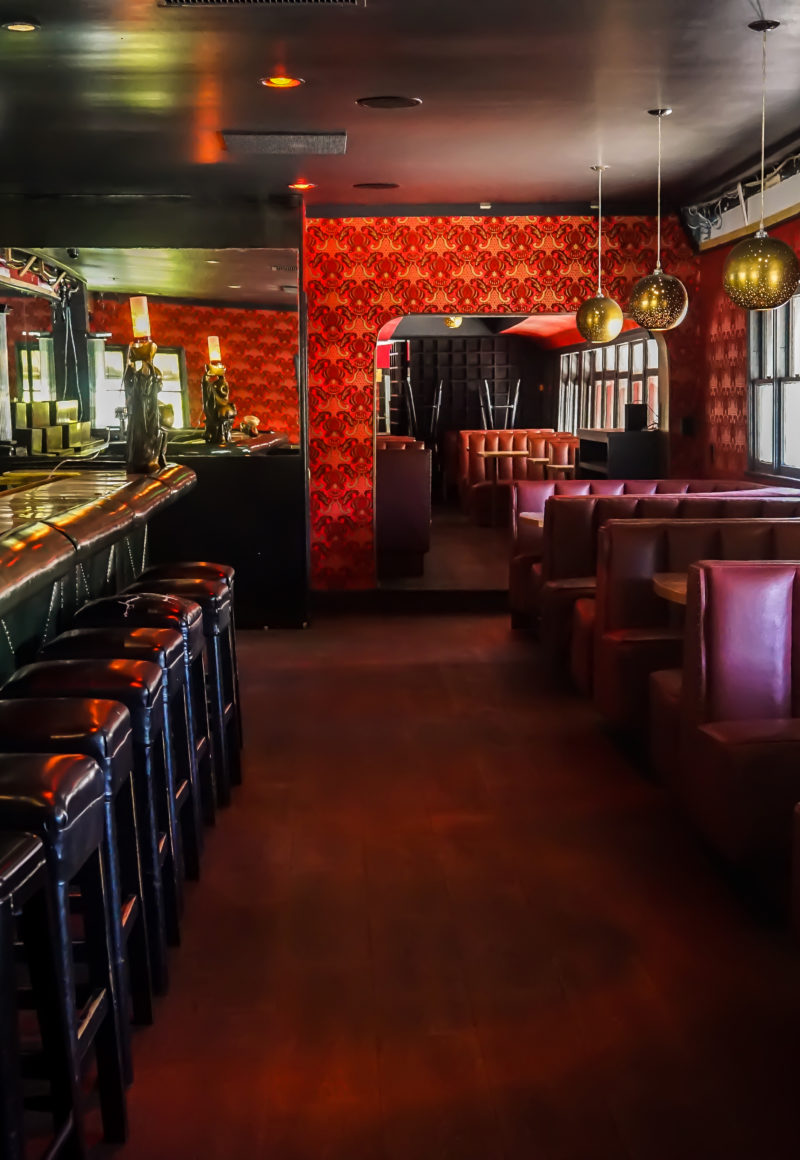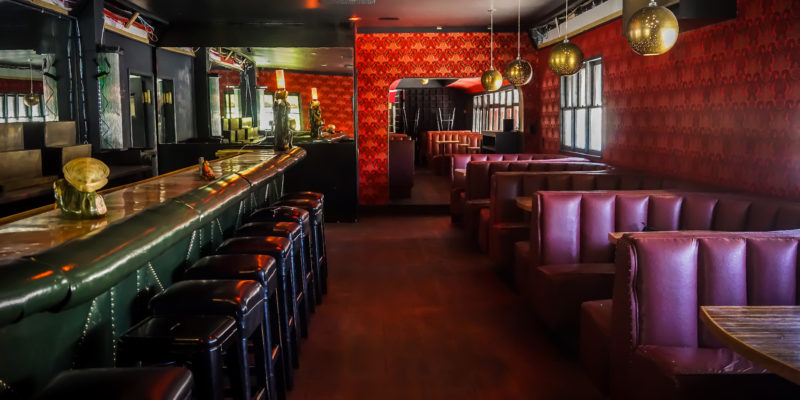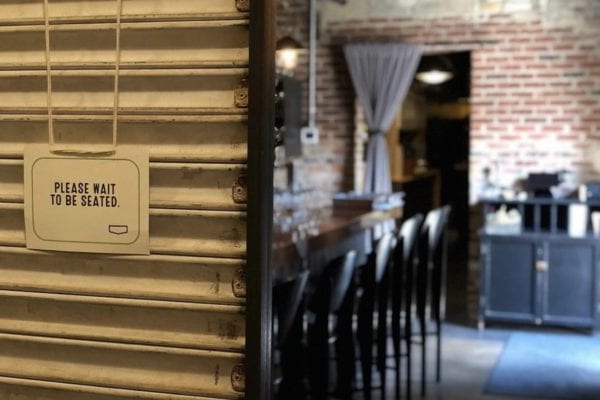Skift Take
It takes time, money and a lot of patience to renovate and restore a historic bar or restaurant. The Los Angeles-based 1933 Group has learned how to jump hurdles and forge new roads in keeping “old Hollywood” alive.
— Lesley Balla
Fans of the film L.A. Confidential know the scene well. Detectives Exley and Vincennes, played by Guy Pearce and Kevin Spacey, respectively, meet at the Formosa Cafe to shakedown a gangster. Exley, newer to the strongarm side of detective work, assumes the woman with the gangster is a high-paid Lana Turner look-alike. It happens to be the real Lana Turner, in all her blonde bombshell glory. She, offended, ends up throwing a glass of water in the detective’s face.
The Formosa Cafe is exactly the kind of place starlets, gangsters and cops would hang out back in the day. Originally built in 1925, the hideaway on Santa Monica Boulevard has lived through Hollywood’s Golden Age to the punk rock 80’s and into the 21st century. Everyone from John Wayne to Marilyn Monroe, Elvis Presley and Bono has holed up here at various times. You could feel that history within its walls.
But the place was almost lost. In the 1990s, the Formosa was threatened with destruction, but the city of West Hollywood chose to conserve and protect it. The most recent owners tried to update the look and menus in the early 2000s, eventually stripping the place of all its historic charm and soul. That was the final nail in the coffin; the Formosa closed in 2016.
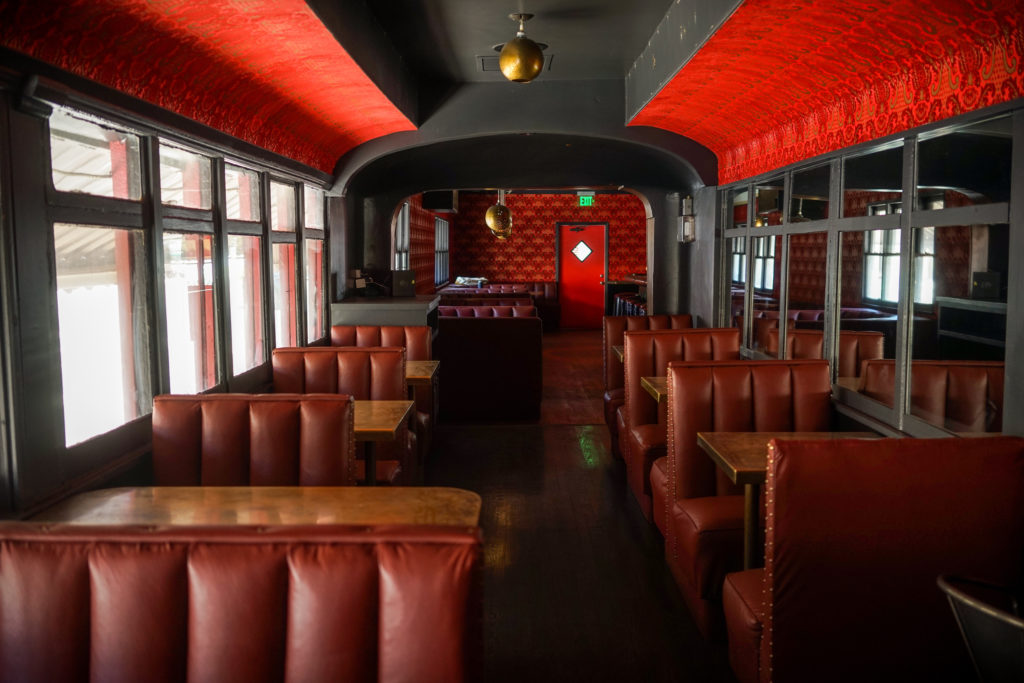
The problem wasn’t so much that the new operators tried to upgrade for a new generation. After all, tastes and trends change at a fast tick, especially in Los Angeles. With so many hot spots opening every other day, there’s a lot at stake to keep up. But the last owners seemed to lack a real appreciation of Formosa’s past.
“Restoration and historical heritage is not going to make you more money,” says Bobby Green, co-owner of 1933 Group, which specializes in reviving historic bars and restaurants around Los Angeles. “If it’s seen simply as a trend, people can fail miserably because either they don’t truly care, their motivations are wrong, or they don’t really understand the history.”
Green, along with business partners Dimitri Komarov and Dmitry Liberman, is currently working on bringing the Formosa Cafe back to life. In 2017 the group signed a 10-year lease on the property and embarked on plan that will cost upwards of $1 million when all is said and done.
“You’re going to spend more money with projects like these,” says Green. “But we take them on because these places were only built once, and you can never build them again.”
Turning the Past Into the Future
You can, however, recreate something. At Formosa, West Hollywood preservation status means no one can change the exterior, including the iconic red paint, neon sign or entrance of the building. Unfortunately, a renovation left the inside obliterated in the early 2000s; it finally closed in 2016 after the public didn’t take to the changes.
While structural upgrades must be made to bring it up to code and to add better flow to the space, the goal is to really restore and preserve historical elements and the Formosa’s original look and vibe.
They started by tearing down everything practically to the studs, looking for original decor and hidden stories. They kept the train car and its copper-topped table and chairs, and brought back the secret room rumored to be a gangster hangout. To source photos, memorabilia, light fixtures and other artifacts, Green met with family members of one of the original co-owners.
“It took a lot of handholding, talking and convincing — we’re talking about family history, legacy,” he said. “We wanted all the original stuff to put it back in place, and a lot was just sitting in a garage. To do this right, you have to have a finger on the past but also a foothold on the present and immediate future. It’s like being psychic.”
Overcoming the Hurdles
The Formosa Cafe is the biggest historical project to date for 1933 Group. For almost 20 years, they’ve created and opened themed bars around L.A., including the campy Bigfoot Lodge, whiskey-heavy Thirsty Crow, the Southern-leaning Sassafras Saloon, and Oldfield’s Liquor Room. But preservation became a cornerstone with more recent projects, including Idle Hour in Burbank, Highland Park Bowl in Highland Park.
The Idle Hour, a giant barrel-shaped bar, is a perfect example of programmatic architecture that once dotted the landscape of Southern California. The 1933 Group painstakingly renovated the structure and reopened it in 2015 after years of work. Highland Park Bowl was originally built as a bowling alley in the 1920s, but it fell into disrepair and lived its last days as a punk rock club.
By preserving the eight-lane alley, and utilizing a mix of original artifacts and new decor elements throughout the space, it’s now a popular neighborhood spot for pizza, cocktails, and games.
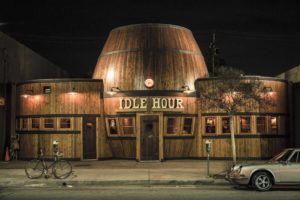
Green said it was easier to work with places like the bowling alley and the barrel-shaped bar because both were mostly forgotten, which left room for interpretation on his part (he deals with design for the group). But with upcoming projects like Formosa Cafe and Tail O’ the Pup, an iconic hot dog-shaped hot dog stand 1933 Group hopes to reopen in the next few years, it’s more like a guardianship of the past than creating something new.
“These places are insanely revered by Angelenos. They’ve been in movies, people have specific fond memories of them,” says Green. “So the biggest hurdle is censoring ourselves. We’re very sensitive to not change them so much that they’re not recognizable.”
All in all, he says the time, effort, and money are totally worth it. If done right, Green says the places could turn a profit or at least break even in a few years time. But that’s not the only reason why the 1933 Group goes the extra mile to bring back such icons back to life.
“There are definitely ghosts and spirits that live here,” he said. “And we definitely don’t want to disrupt those.”
Lesley Balla is a food, drink and lifestyle writer whose work has appeared in regional, national, and online publications including Angeleno, Zagat.com, The Hollywood Reporter, Los Angeles magazine, LA Weekly, Eater, Tasting Table and many more. When she’s not discovering the best eats around town, you can find her walking and hiking with her husband somewhere in the San Gabriel mountains, eating oysters and picking berries in the Pacific Northwest, and strolling whatever farmers market is nearby. Follow her on Twitter and Instagram @LesleyLA.

